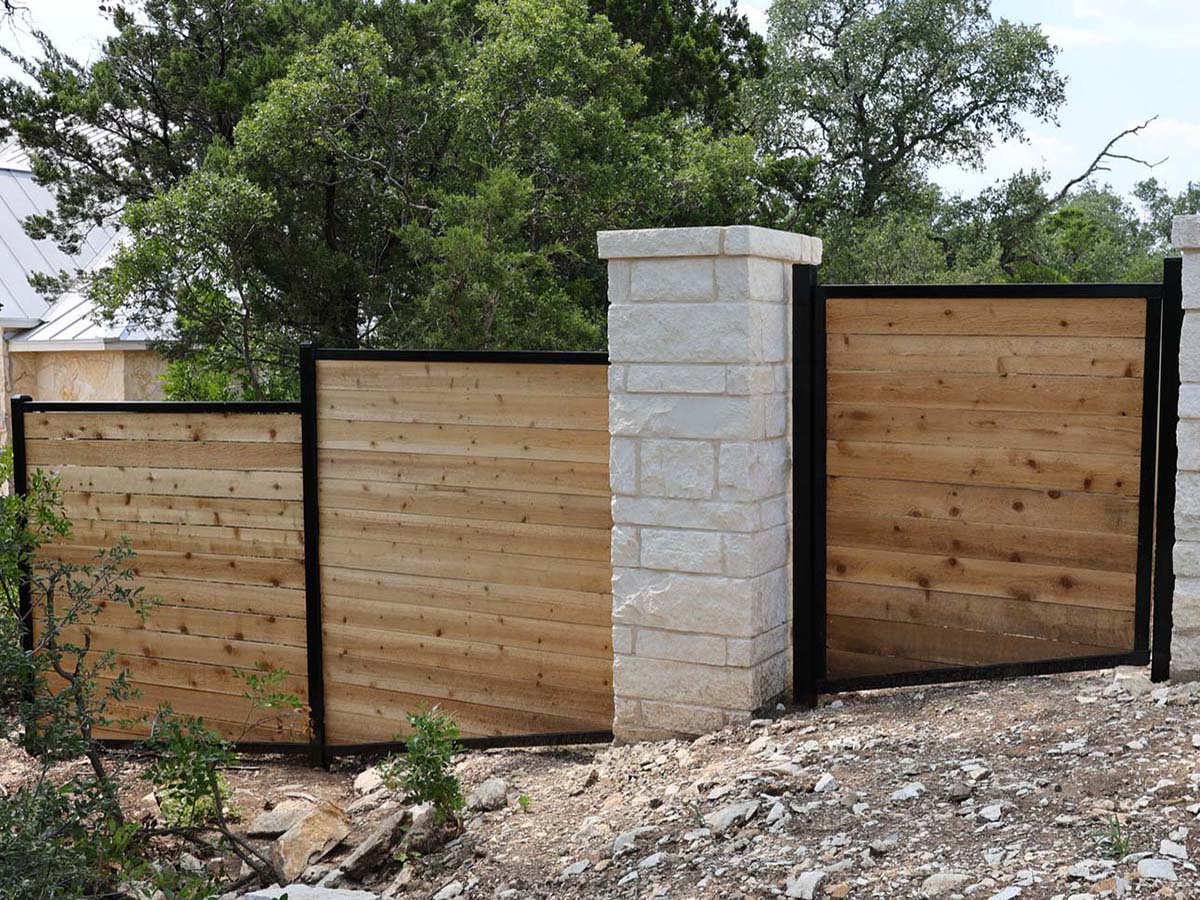All Categories
Featured

Among the most preferred options, wood, plastic, and aluminum each offer distinct benefits and downsides. Here's a malfunction of the pros and cons of these three usual fencing products.
Timber Fencing. Timber fencing has actually been a classic option for homeowners due to its all-natural elegance and versatility.
Pros:. Visual Allure: Timber supplies a warm and classic look that enhances a variety of architectural designs. Adjustable: It can be repainted, stained, or reduce into special layouts to fit individual choices. Cost-Effective: Originally, timber fencing can be a budget friendly alternative contrasted to various other products. Eco-Friendly: Wood is a renewable energy and can be sustainably sourced. Cons:. High Upkeep: Wood calls for routine securing, staining, or paint to avoid rot, insect damage, and weathering. Sturdiness Concerns: Without correct care, timber can warp, fracture, or degeneration gradually, specifically in areas with high humidity. Shorter Life-span: A wood fence generally lasts 10-20 years, depending upon the sort of wood and level of upkeep. Timber is excellent for those that value a conventional appearance and want to commit to its upkeep.
Plastic Fencing. Plastic is a contemporary, low-maintenance secure fencing option that has actually grown in popularity recently.

Pros:. Reduced Upkeep: Vinyl does not call for painting, discoloration, or securing and can be quickly cleaned with soap and water. Weather Resistant: It holds up against rough weather without decomposing, rusting, or bending. Long-Lasting: Vinyl fencings can last 20-30 years with marginal maintenance. Range of Styles: Available in many shades, styles, and appearances, some vinyl alternatives imitate the look of wood. Disadvantages:. Greater Upfront Expense: Plastic fence can be extra pricey at first compared to timber. Brittleness in Cold Weather condition: In extreme cool, vinyl may fracture or end up being fragile. Limited Repair works: Individual panels can be challenging to change, requiring careful matching to the existing fence. Plastic is ideal fit for house owners looking for a resilient, low-maintenance solution with contemporary looks.
Aluminum Fence. Light weight aluminum fence is a light-weight and resilient choice, frequently picked for its contemporary appearance and versatility.
Pros:. Rust-Resistant: Aluminum does not corrosion, making it an exceptional choice for wet or damp climates. Reduced Upkeep: Requires minimal upkeep and is very easy to clean. Sturdy: While lightweight, light weight aluminum is strong sufficient to stand up to lots of ecological problems. Long Life-span: Can last numerous decades without significant wear or wear and tear. Range of Styles: Provides a classy and streamlined look, typically made use of for ornamental or ornamental purposes. Cons:. Greater Price: The first investment for light weight aluminum fencing is more than wood or vinyl. Much Less Personal privacy: Aluminum fencings are commonly designed with open pickets, making them much less reliable for privacy. Vulnerable to Dents: Although resilient, light weight aluminum can be nicked by strong effects. Aluminum is suitable for those seeking an elegant, lasting option that needs very little treatment.
Making the Right Option. Each secure fencing material-- plastic, timber, and aluminum-- offers distinctive advantages and downsides. Your choice must depend on your details concerns, such as budget, upkeep preferences, environment, and visual goals:
If you love a traditional appearance and don't mind normal upkeep,Select timber. Go with vinyl if you desire a low-maintenance, weather-resistant fence with modern-day charm. Choose light weight aluminum if you focus on durability, rust resistance, and a streamlined design. By weighing these benefits and drawbacks, you can pick a fence product that enhances your home while fulfilling your functional needs.
Latest Posts
Uncover the Montclare Commitment - Trusted Auto Solutions
Published Apr 22, 25
2 min read
Reliable Mechanic Services at Montclare Auto Repair - Get Service Today!
Published Apr 22, 25
2 min read
Transform with LASIK Surgery in Your Area at the Eye Center South
Published Apr 22, 25
1 min read
More
Latest Posts
Uncover the Montclare Commitment - Trusted Auto Solutions
Published Apr 22, 25
2 min read
Reliable Mechanic Services at Montclare Auto Repair - Get Service Today!
Published Apr 22, 25
2 min read
Transform with LASIK Surgery in Your Area at the Eye Center South
Published Apr 22, 25
1 min read